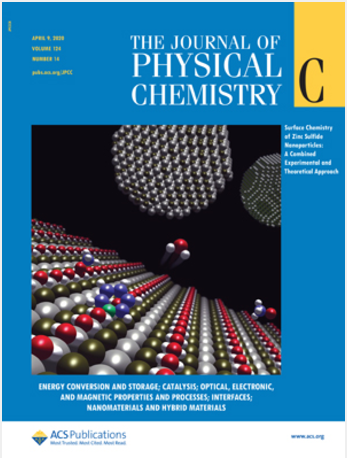The Pore-Branching Channels of Porous Anodic Alumina Formed in an Alkaline Solution of Potassium Phosphate
IF 3.2
3区 化学
Q2 CHEMISTRY, PHYSICAL
引用次数: 0
Abstract
In this study, the anodizing processes of aluminum in oxalic acid solution (pH ≈0.98) and alkaline aqueous solution (pH ≈12.86) were compared. The channels of porous anodic alumina (PAA) obtained from the two electrolytes were characterized by FESEM. The pore-branching channels of PAA were obtained by anodizing aluminum in an alkaline aqueous solution of potassium phosphate. The pore-branching channels of PAA cannot be clarified by the acidic field-assisted dissolution theory (FADT). In this article, the formation mechanism of PAA under alkaline conditions is explained by the oxide viscous flow model around the oxygen bubble model and electronic current theory. The pore diameter of porous anodic alumina formed in potassium phosphate electrolyte (≈90 nm) is larger than that formed in oxalic acid conditions (≈25 nm) because there are two oxygen bubbles at the large bottom, which is conducive to the formation of pore-branching channels.

多孔阳极氧化铝在碱性磷酸钾溶液中形成的孔分支通道
本研究比较了铝在草酸溶液(pH≈0.98)和碱性水溶液(pH≈12.86)中的阳极氧化过程。用FESEM对两种电解质制备的多孔阳极氧化铝(PAA)通道进行了表征。在磷酸钾碱性水溶液中阳极氧化铝,得到了PAA的多孔分支通道。酸性场辅助溶解理论(FADT)不能解释PAA的孔分支通道。本文通过氧泡周围的氧化物粘性流动模型和电流理论解释了PAA在碱性条件下的形成机理。在磷酸钾电解液中形成的多孔阳极氧化铝孔径(≈90 nm)比在草酸条件下形成的多孔阳极氧化铝孔径(≈25 nm)要大,因为在大的底部有两个氧泡,有利于形成分孔通道。
本文章由计算机程序翻译,如有差异,请以英文原文为准。
求助全文
约1分钟内获得全文
求助全文
来源期刊

The Journal of Physical Chemistry C
化学-材料科学:综合
CiteScore
6.50
自引率
8.10%
发文量
2047
审稿时长
1.8 months
期刊介绍:
The Journal of Physical Chemistry A/B/C is devoted to reporting new and original experimental and theoretical basic research of interest to physical chemists, biophysical chemists, and chemical physicists.
 求助内容:
求助内容: 应助结果提醒方式:
应助结果提醒方式:


